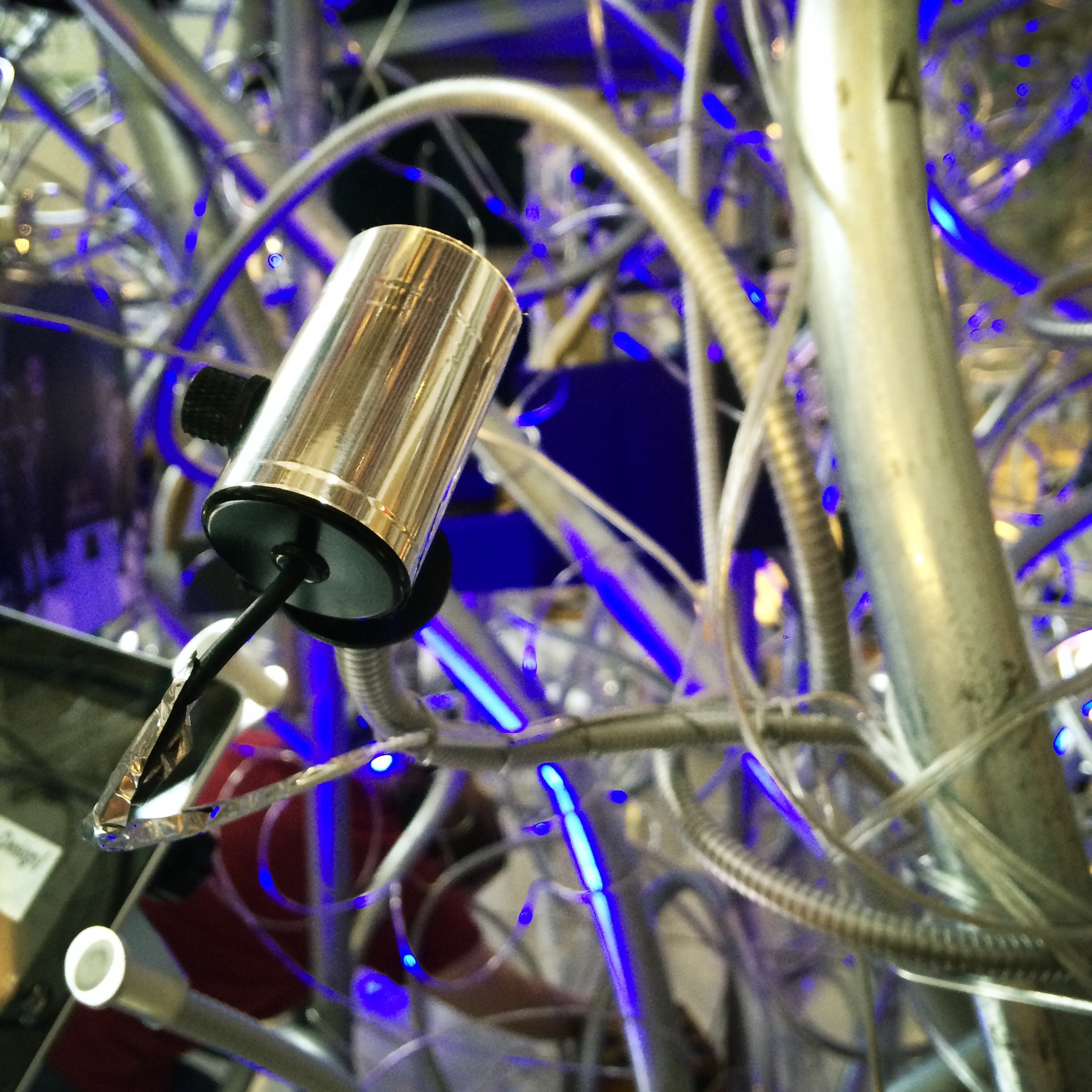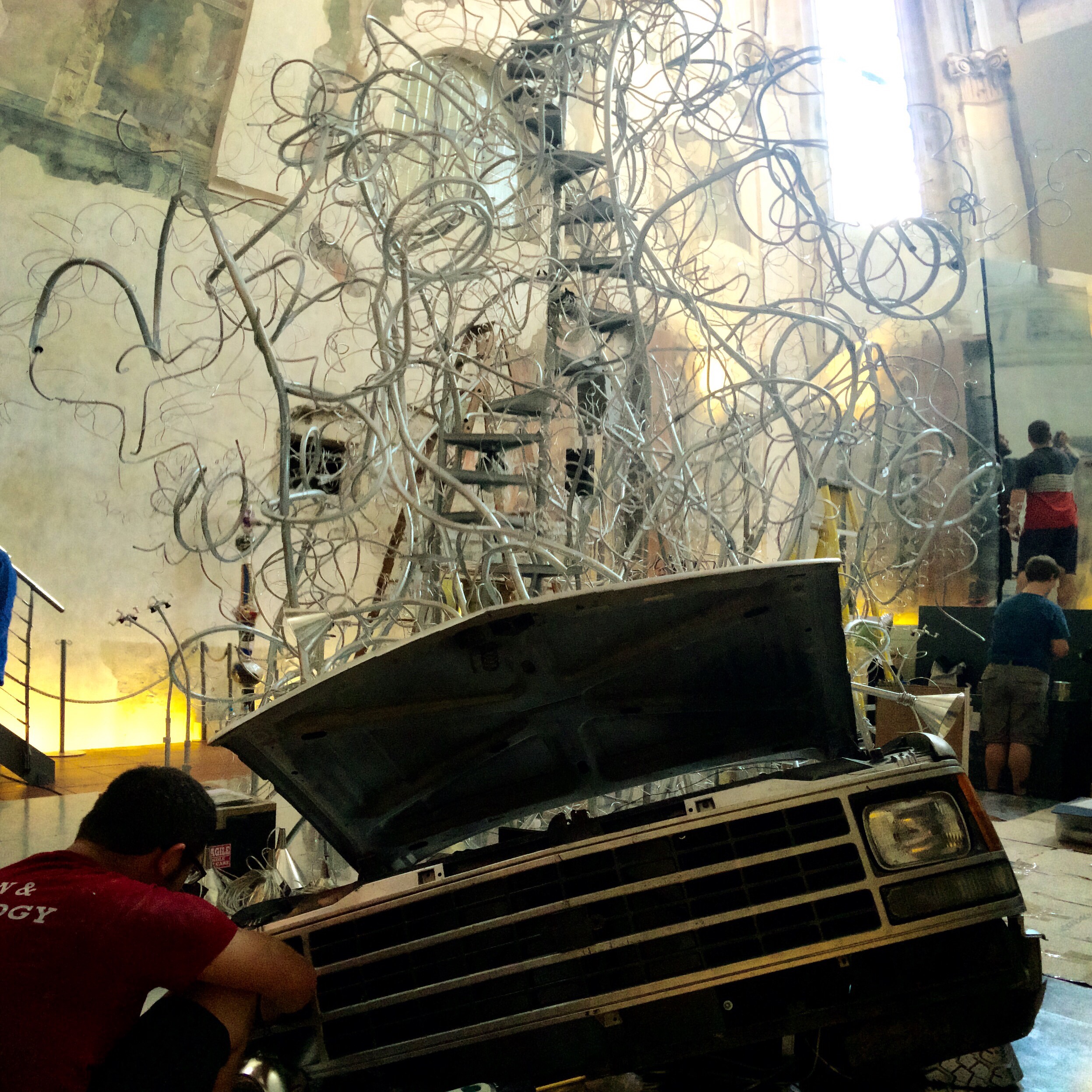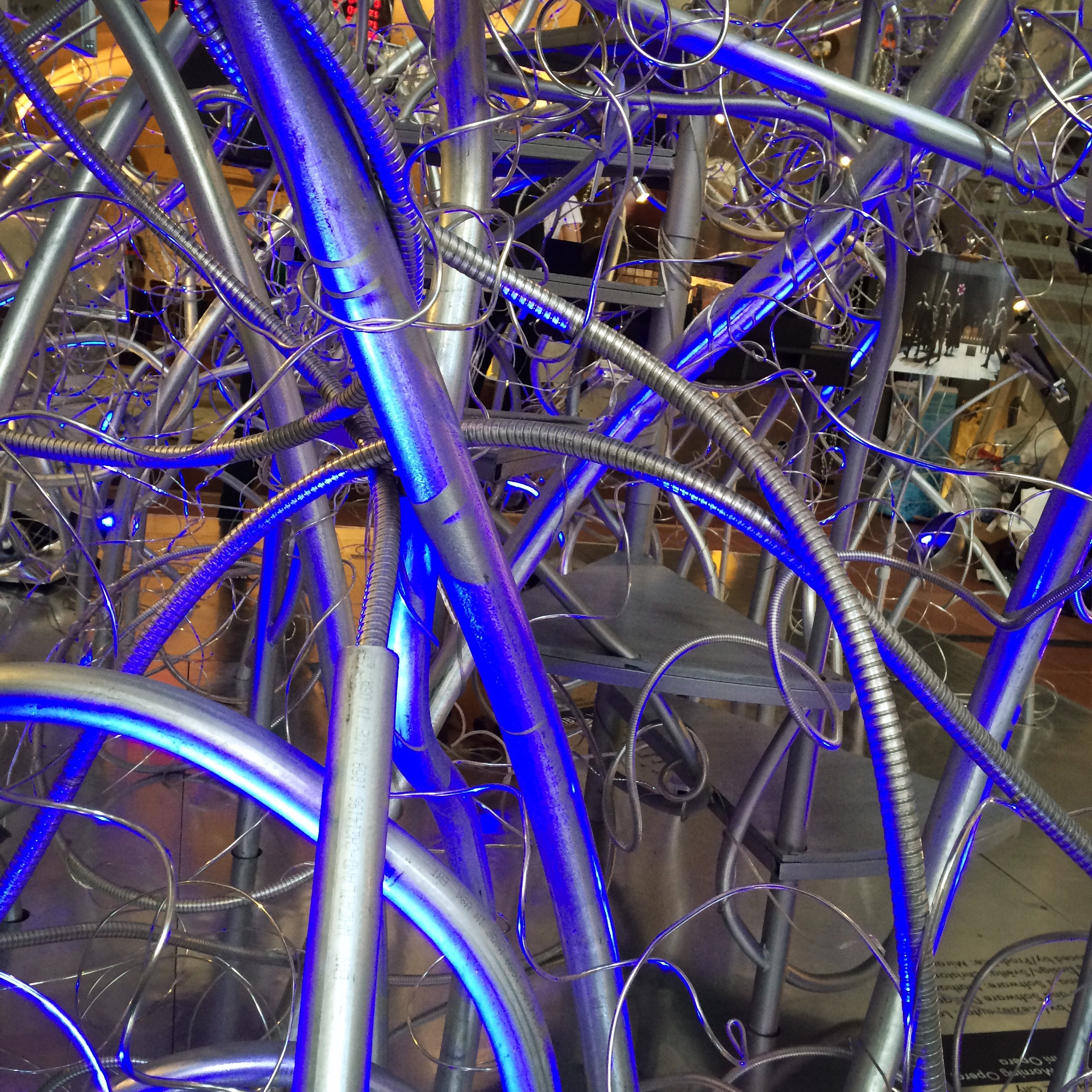As well as sharing the story of our progress over the past year with all of you, I have also been an electrician on the National Exhibit. Aaron and I have worked as a team to wire, hang, focus and troubleshoot the lighting system.

After talking with Aaron, the lead electrician for the project who wired the electrics hub beneath the hood of the truck and completed the programming, we came to the conclusion that the easiest part of lighting the exhibit was also the most difficult. The free form nature of the design meant that objects, gooseneck, and even the lighting fixture placement can be random, with a purpose. So the fixtures were easy to place, but difficult to come up with a plan for circuiting and figuring out the most efficient cable runs to all of the fixtures.

Working with Markéta in December and Janurary, we came to the conclusion that a lighting plot would be rather difficult. We drew up a system that split up the exhibit in levels. Using these 5 different levels, we were able to power 8 lights on each level and run one cable from each level back to the truck. This was pretty much our lighting plot for the exhibit. No labeling system besides color coating each level. The fixtures or placement didn’t even receive a name or number.
After the lights were installed by drilling small brackets into the conduit and staircase, we had the task of stringing the silver cable throughout the exhibit. The cable drapes over gooseneck, coils within the curly q’s and is more or less tangled in the conglomerate of wire. Let me remind you we have to strike the exhibit so it can be installed again at USITT in Salt Lake….

Overall, Aaron and myself had a great time working together and with Markéta and Kevin on the lighting system. Set up in St. Ann’s Cathedral was our first time installing the full lighting system, and we were relieved when it went up smoothly and Klara and the curators were pleased with the product. I am walking away from the project with a huge appreciation for overly pre-planning, and trying to understand the solution before the problem even hits. Below are some quick numbers including the total amount of power, fixtures, and cable used for the National Exhibit.
Numbers:
- 56 Lighting fixtures including 9 color changers, 45 white light, and 2 headlights
- Approximately 1,900 feet of silver cable spiraled and run wishing the exhibit.
- Approximately 300 Watts of power. Total.
